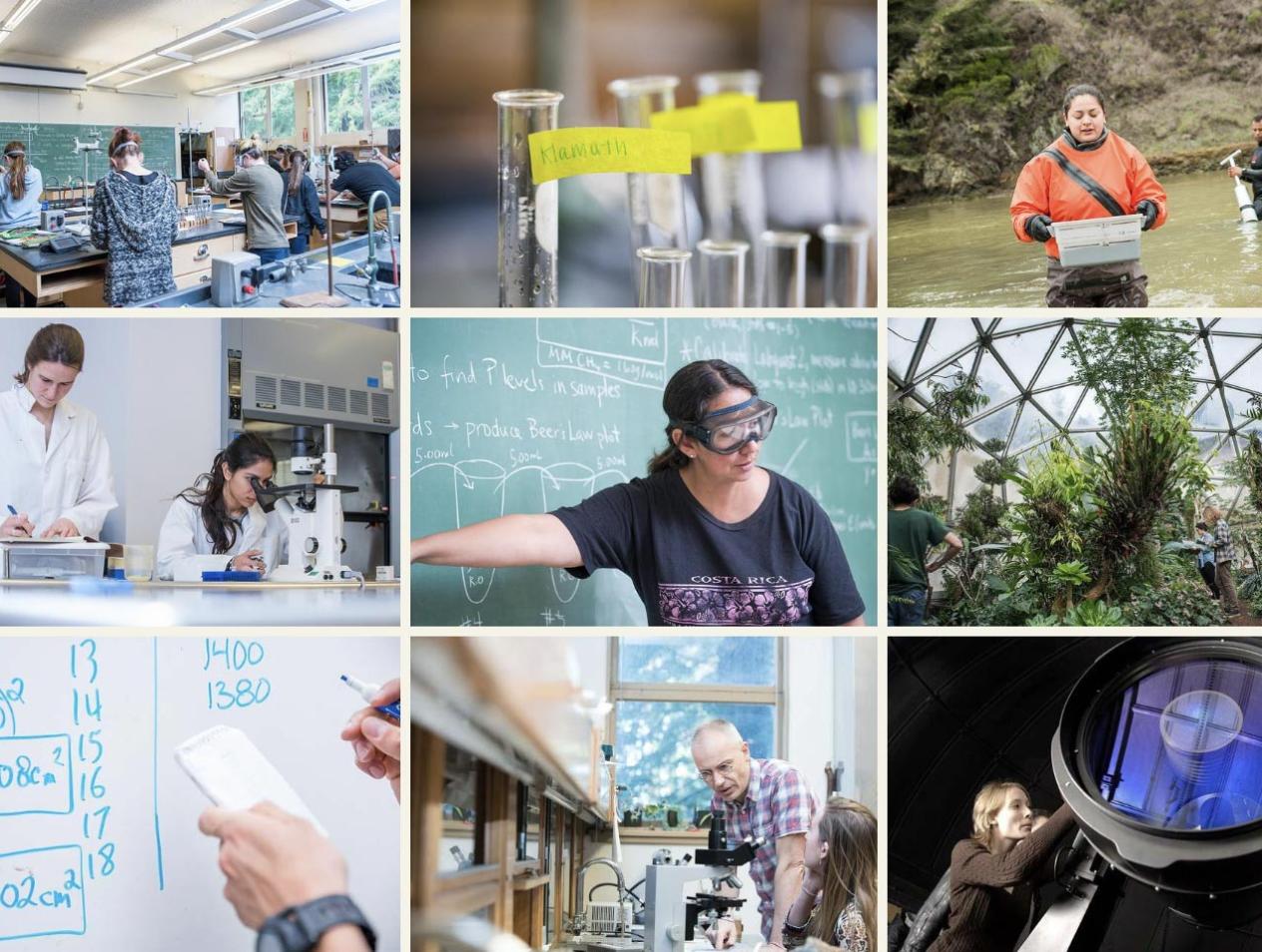Breadcrumb
Strategic Plan
Executive Summary
Formed in February 2017, a committee of CNRS faculty, staff, students, and administrators set out to develop the first-ever strategic plan for following through on the college's revised Mission, Vision, and Values. The Mission (i.e., what we are here to do) of CNRS is now the following:
The College of Natural Resources and Sciences provides a high-quality education through student-centered, hands-on learning in inclusive environments; prepares students to be scientifically literate global citizens who incorporate diverse cultural and cross-disciplinary knowledge systems into their work; graduates STEM professionals to meet state and national needs; collaborates with campus and community partners; and carries out transformative research that advances scientific understanding and benefits all members of society.
Originally envisioned as a one-year project, the strategic planning process continued through 2018 due to the need for comprehensive environmental scans of the many facets of CNRS, the recent change in budget and enrollment, and the appointment of Interim Deans. The environmental scans include student and faculty perceptions, budgets, teaching power, teaching practices, curricular structures, bottleneck courses, graduate programs, and scholarship. Each scan generated its own recommendations, which became the foundational material for the Goals, Objectives and Implementation Plan within the overall Strategic Plan.
The environmental scans show the CNRS to be a national leader among science colleges focused on natural resources, conservation, ecology, and evolution. The diverse and unique programs and resources in the CNRS are well matched to Humboldt's geographic setting. The CNRS enjoys one of the highest rankings in the country for subject areas (e.g., natural resources & conservation), as well as high per capita rates for undergraduates who continue on for post-graduate degrees (e.g., within the CSU, Humboldt's CNRS ranks #1 for students who continue on to earn a PhD). Other achievements include a high level of extramural funding that supports hundreds of students in meaningful employment, 6-year graduation rates that meet or exceed the overall Humboldt 6-year graduation rate, and faculty and staff who design and implement demonstrably effective curricular and pedagogical changes. The reputation resulting from these successes is partly responsible for CNRS accounting for 81.7% of Humboldt's growth in FTES from 2006 to 2016, and for having a slightly higher yield rate for applicants to Humboldt.
The environmental scans also show that CNRS faces significant challenges. There has been a steady erosion of teaching power and staff support while, at the same time, 4-year graduation rates for all CNRS students have become too low (i.e., 11%). Moreover, the gap between 4- and 6-year graduation rates of underrepresented and traditional groups is unacceptable. The CNRS Place-Based Learning Communities, supported primarily by extramural funds, are improving retention rates as well as closing equity gaps for first-year students. However, additional progress on closing equity gaps will require targeted professional development for CNRS instructors (i.e., tenure-track faculty, lecturers, teaching associates) so that all students in the CNRS experience culturally responsive curricula and pedagogies in the classroom, laboratory, and field. Additional limitations for the CNRS include a lack of office space and quality research space for faculty and students, as well as shrinking enrollments and slow graduation rates of the CNRS graduate students. All of these issues need to be addressed for the vitality and functioning of our professional community.
Taking actions to support what the CNRS does well, or to address what the college needs to do better, will require two changes to the Humboldt financial process. First, Humboldt needs to use a financial model that is linked to the instructional costs required by STEM programs. Second, College Deans must have a stronger voice in the campus-wide financial process. Only a Dean has the depth and breadth of understanding of a college's programs necessary to discuss the implications of shifting budgets to college priorities. Thus, including the Deans prominently in the campus financial process would promote transparent and inclusive budgetary decision-making across the campus.
Goals & Objectives
Goal 1
Raise the quality of education for undergraduate and graduate students by addressing issues from pedagogy to hiring to support
Goal 3
To exemplify, promote, and teach environmental sustainability in recognition that healthy social and economic systems depend on the resilience of ecological systems
Goal 4
Regionally and nationally recognized research center for applied, student-engaged research
Goal 5
Student, staff, faculty and administrative employees have satisfaction in their work in CNRS






